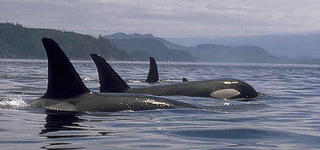Only 78 Southern Resident Orca Remain: Are We Seeing the Beginning of Their Extinction?
 Recent articles in the Seattle Times and Post Intelligencer have confirmed that the Federally Endangered Southern Resident Orca have now been reduced to only 78 individuals. There is also a newborn (which is not yet included in the formal count), the only one born since 2012. While it is certainly good news that a calf has been born, this population has been in decline for a decade and is now down 13% from the high of 90 whales in 2005, the same year they were listed as endangered. This is the lowest count since 1985, so the Orca are no better off now than three decades ago.
Recent articles in the Seattle Times and Post Intelligencer have confirmed that the Federally Endangered Southern Resident Orca have now been reduced to only 78 individuals. There is also a newborn (which is not yet included in the formal count), the only one born since 2012. While it is certainly good news that a calf has been born, this population has been in decline for a decade and is now down 13% from the high of 90 whales in 2005, the same year they were listed as endangered. This is the lowest count since 1985, so the Orca are no better off now than three decades ago.
Indeed the Orca are severely stressed for food (and possibly starving at times), but what recent press accounts did not say is that motorized vessels directly contribute to their feeding problems by the constant noise and disturbance the whales experience during the summer months. It also did not point out that almost all of the key aspects of the Southern Resident Orca population are in decline (based on publically available data from the National Marine Fisheries Service and Center for Whale Research):
- Breeding age females: 20 in 2005; 16 now (-20%)
- Breeding age males: 15 in 2005; 13 now (-13%)
- Juvenile females: 14 in 2005; 11 now (-21%)
- 1-2 year olds: 11 in 2005; 5 now (-55%)
Only the juvenile males are in reasonable shape: up 27% since 2005 (15 up to 19). For detailed charts and references to the extensive literature on the affects of boat noise and disturbance, please see our website (www.orcarelief.org).
Everything that can be done to save the Southern Resident Orca should be done. Everyone concerned about these whales agree there should be more salmon for them to eat, but this could take 30 to 60 years (if ever) to achieve. There should also be a smaller toxic load in the Sound and the salmon the Orca eat, but reducing this load could take several (or many) Orca generations. Only reducing the noise and disturbance from motorized boats can be achieved relatively easily, quickly, and inexpensively: by creating a Whale Protection Zone off the west side of San Juan Island, where the Orca can rest and feed.
If there was ever a time to apply the Precautionary Principle to an endangered population, the time is now. In this case the harm is being caused by our failure to take the needed policy step; the burden of proof is on the National Marine Fisheries Service to demonstrate that by not providing a Whale Protection Zone, they are not harming the Orca. Orca Relief Citizens Alliance is committed to creating a Whale Protection Zone and working together with others agree that this step is needed (and to that end we have started a petition drive to help convince NMFS; see our website (www.orcarelief.org). A Whale Protection Zone is the achievable regulatory protection that would give us the best chance of saving this population from extinction – the outcome no one in Washington, or anywhere else, wants.